El Refugio showcases a curated collection of Afro-Caribbean masterpieces, highlighting the vision and craft of the region’s most influential artists.

Kettle of Poppies by Roberto Diago. Afro-Cuban artist Juan Roberto Diago Durruthy is a descendant of another famous artist, Roberto Diago (1920-1955), and has garnered international acclaim for his pieces evoking the dehumanizing effect of slavery. This is one of his early works, executed in the materials available to him in the poverty of Havana. In Classic Cuban improvisation, he uses exterior house paint on a stretched linen canvas. The archetypal images in this piece draw from Diago's African heritage and evoke the works of his friend Manuel Mendive, Jose Bedia, and Eduardo Choco. Size (h w d): 60 x 60 in. Medium: house paint on linen fabric.
Slave by Roberto Diago. Example of recent work by Havana artist Roberto Diago. Size (h w d): 32 x 32 in. Medium: oil on canvas.
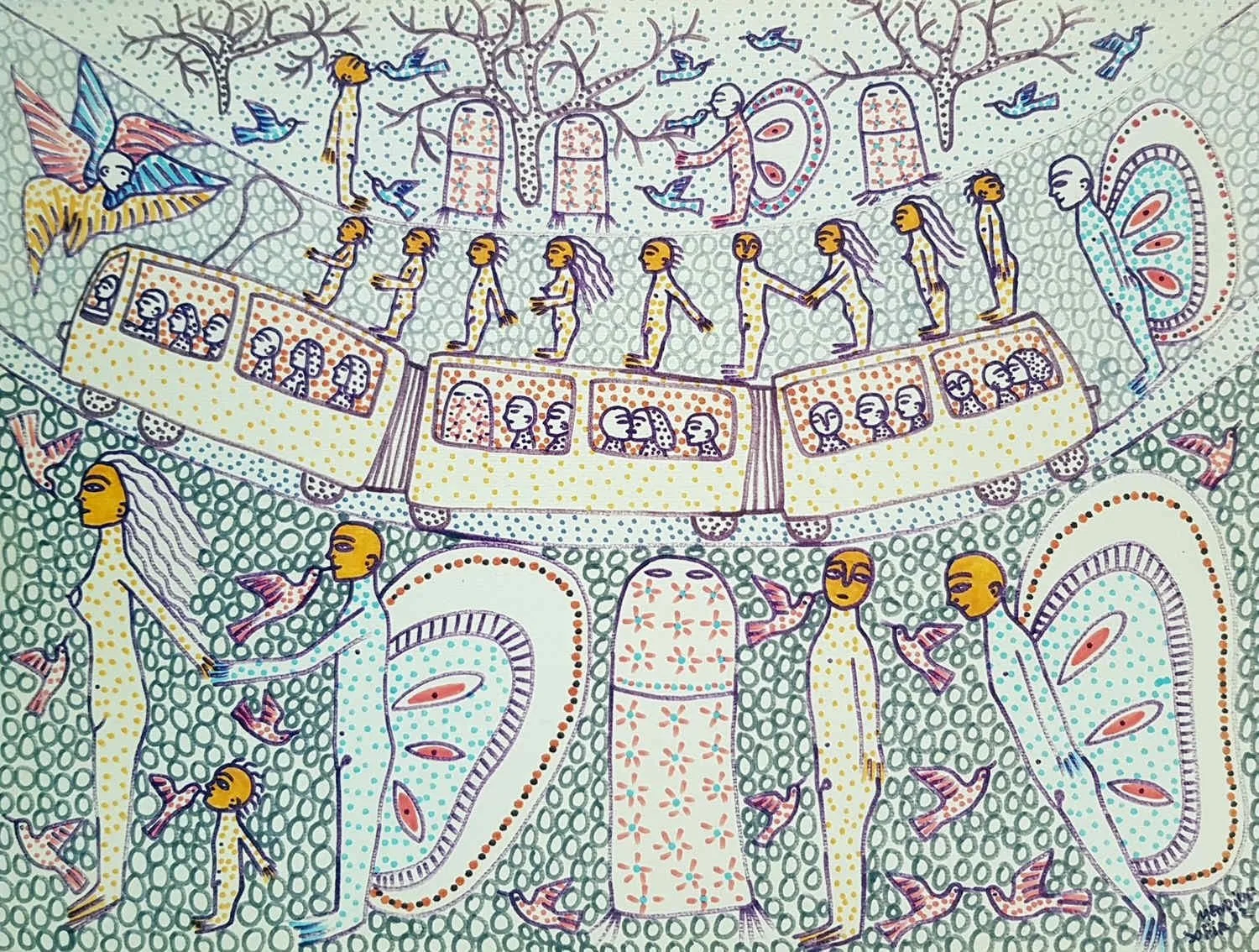
Angels by Manuel Mendive. An essential piece by Afro-Cuban artist Manuel Mendive, executed during his travels to Europe in 1982, illustrates his visions of the passage between life and death. Mendive was born in Havana, Cuba, in 1944. His family practiced La Regla de Ocha, or Santería. He cherishes his Yoruba roots from the West Coast of Africa.[1] In 1963, he graduated from the San Alejandro Academy of Plastic Arts, Havana. Size (h w d): 14 x 18 in. Medium: pen and ink on paper. Creation Date: 1982

Three Flying Birds (Tres Aves Voladoras) by Manuel Mendive Born 1944 Provenance: Private Collection, Miami, FL. Exhibited in Manuel Mendive, Gary Nader Fine Arts, Miami, FL, 1999, Creation Date: 1998 Medium: oil on canvas. Size: 45 ½ x 52 ¼ inches

Manuel Mendive

Nkuyo by Jose Bedia. The title of Jose Bedia’s work on paper, Nkuyo, is a reference to a deity in the Santería religion that is a “spirit figure of the night” who is the deity of forest and roads, and acts as a guide and balance in the universe. This work depicts the figure moving to a new place, and the chain that he holds in his left hand signifies his connection to what he has left behind. For Bedia, this image relates to leaving his homeland of Cuba, as he currently lives and works in Miami, Florida. Size (h w d): 18 x 24 in. Medium: ink and acrylic on paper. Creation Date: 1994

Oye en la Suya by Jose Bedia. Since the 1970s, José Bedia’s work has focused on the Amerindian and Afro-Cuban religions of Santería and Palo Monte, referencing their spiritual practices and the relationship of man to nature and animals. Bedia is a priest of Palo Monte, and his practice has helped him realize that all indigenous cultures are more often linked by similarities than divided by differences. The result is a body of work that is rich in symbolism and mythology. Oyá en lo suyo/ Oyá in his Own World, 1998, exemplifies the synthesis of sources and trademark style present in Bedia’s work. In Yoruba and Palo Monte mythologies, Oyá is the warrior-spirit of the wind, lightning, fertility, fire, and magic. She creates hurricanes and tornadoes, guards the underworld, and is the spirit of change, chaos, and transition. In this etching, Oyá is “doing her work” by blowing wind to a mountain village, where we can see a house and an electric post having the effect of being blown away by her wind. Size (h w d): 32 x 44 in. Medium: etching. Creation Date: 1992

Poner El Universo En Orden Otra Vez (Putting The Universe Back in Order) by Jose Bedia. Jose Bedia, master of the contemporary Cuban art movement, incorporates images of religious archetypes drawn from indigenous art collected from around the world. This image includes Yoruban-based figures that have evolved in Cuba's Santeria religion. This work was featured on the cover of the catalogue of the exhibition of Bedia's work at Snitzer gallery in 2022, one of the first pieces as Bedia's practice turned to works of larger scale and ambition. Size (h w d): 62 x 110 in. Medium: Acrylic on Handmade Weaving. Creation Date: 2020

Protesta by Rufino Tamayo. A mixographic engraving on handmade paper, signed by the artist. One of Tamayo's most iconic images. This is acknowledged as a masterpiece of the mixographic technique developed by Tamayo, clearly showing the architecture of disconnected fiery planes to emphasize the terror of the subject. This image is featured as the cover of the catalog and postcards of the Tamayo Museum in Mexico City and became a key figure in a ballet dedicated to Tamayo by Guillermina Bravo entitled Constellations and Dancers. Size (h w d): 30.5 x 22.75 in. Medium: mixographic print. Creation Date: 1983

Oceanic by Carlos Alphonso. Carlos Alphonso is a multidisciplinary artist whose work bridges the spiritual and the sensory, blending Afro-Caribbean heritage with contemporary abstraction. His vivid compositions explore identity, ritual, and the interplay between nature and memory. Through painting, sculpture, and immersive installations, Alphonso invites viewers to experience color as emotion and texture as storytelling. Size (h w d): 60 x 60 in. Medium: Oil On Canvas. Creation Date: 1989

Maternity #2 by Carlos Alphonso. Size (h w d): 32 x 48 in. Medium: gouache on paper - color. Creation Date: 1989.

Cabesa by Carlos Alphonso. Size (h w d): 25 x 31 in. Medium: gouache on paper. Creation Date: 1988

Untitled by Carlos Alphonso Alfonso's graffiti despoliation of a Mondrian image. The forked tongue from the symbolic head and a black cross over Mondrian imagery. Size (h w d): 28 x 28 in. Medium: ink and acrylic on paper. Creation Date: 1986.
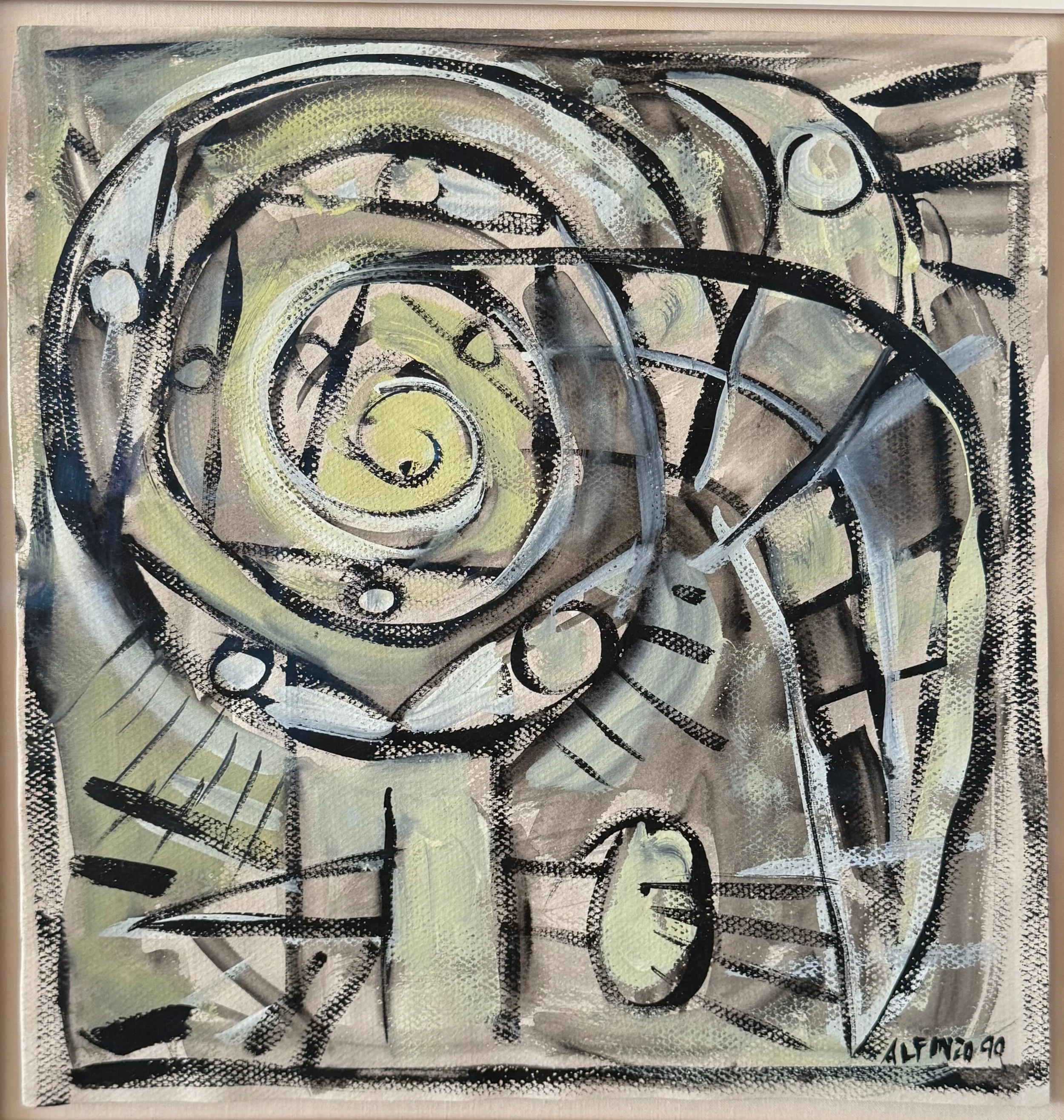
Untitled by Carlos Alphonso Medium: gouache on paper - color. Creation Date: 1988.

Untitled - Four Sketches of Deconstructed Body by Carlos Alphonso. A small but powerful evocation of Alfonso's symbology of the human body, executed in 1988 or 1989, around the time of his diagnosis of AIDS. Medium: gouache on paper. Creation Date: 1988.

Gun and Head Sculpture by Carlos Alphonso. Alfonso's take on Miami and US gun culture, in 1990, after his diagnosis of AIDS. Alfonso arrived at the Mariel boat lift in 1980. Size (h w d): 21.5 x 14 x 21 in. Medium: painted iron. Creation Date: 1990
Côte d'Ivoire by Aboudia (Abdoulaye Diarrassouba) Aboudia fuses Yoruban religious imagery with the graffiti and energy of Abidjan’s streets. Drawing on West African carving traditions and the trauma of the Ivorian civil war, his works often depict children and scenes of conflict, echoing both Jean-Michel Basquiat’s raw style and Afro-Caribbean spiritual art. In 2022, he became the top-selling artist at auction worldwide, surpassing Damien Hirst. Size (h w d): 60 x 60 in. Medium: acrylic and oil on canvas. Creation Date: 2018

Source of Knowledge by Carlos Capelán. Although his conceptual work includes drawings and paintings, his installations are more widely known for their atmospheric impact, constituting an environment in which the viewer is free to wander around and experience notions of displacement. In 1995, Capelán received the Guggenheim Fellowship. In 1973, Capelán moved to Lund, Sweden. Capelán studied at Grafikskolan Forum in Malmö, Sweden. Capelán currently resides in Moravia, Costa Rica. Size (h w d): 48 x 92 in. Medium: oil and gouache on paper mounted on wood. Creation Date: 1992. Weight: 200 lbs.

Love Me Again (Ámame de Nuevo) by Miguel Florido Miguel Florido was born in Cuba and now lives in Madrid with his wife and children. His works have been in collections and exhibitions at many museums in the United States, including the Blanton Museum, the Appleton Museum, FSU Museum of Fine Arts, and the Coral Gables Museum. Medium: oil on canvas Size: 39 1/2 x 79 inches Creation Date: 2024-2025
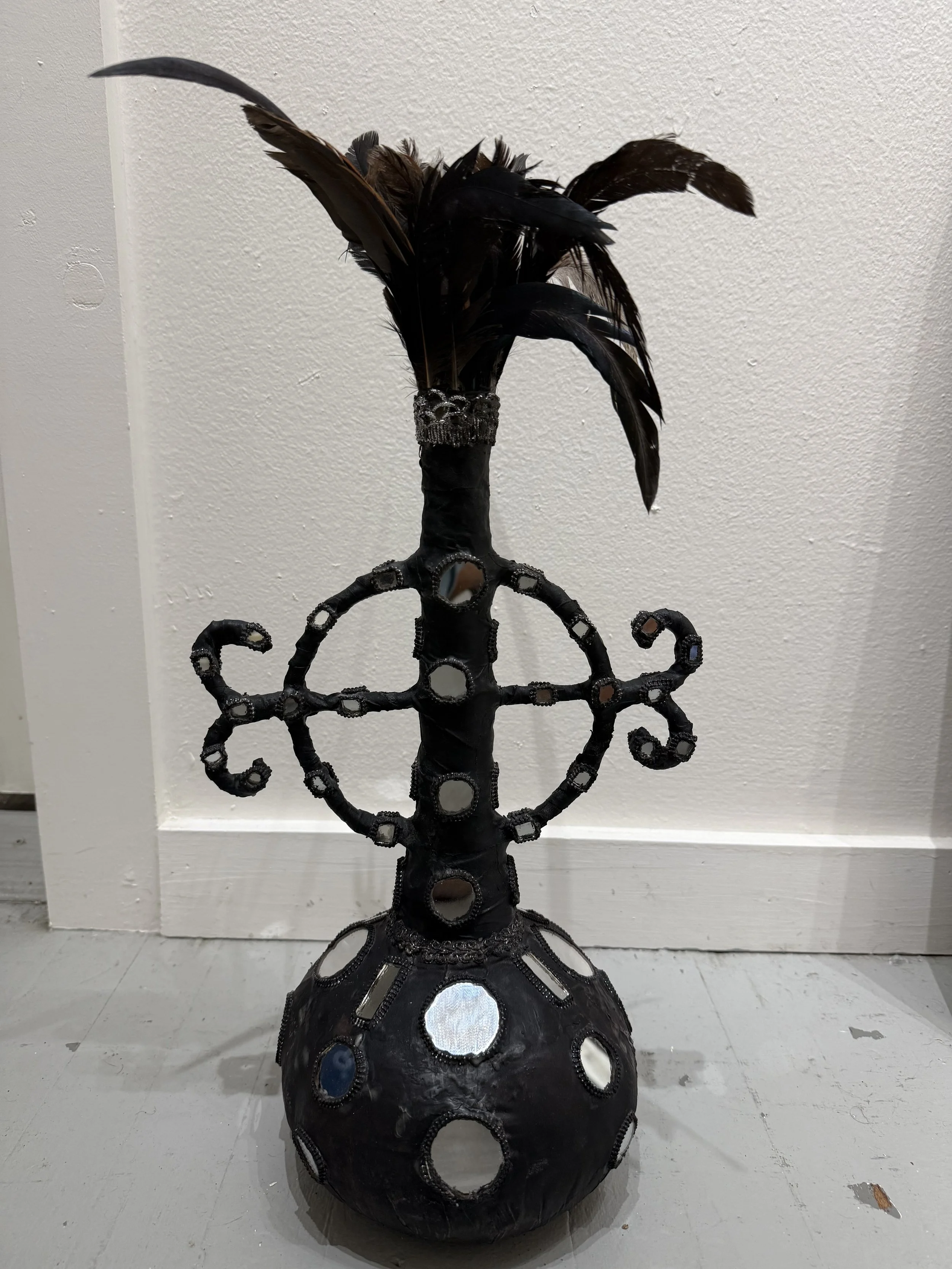
Vèvè by Jhonny Cineus Creation Date: 2023 Medium: Paquet congo Size: 17 x 9 in
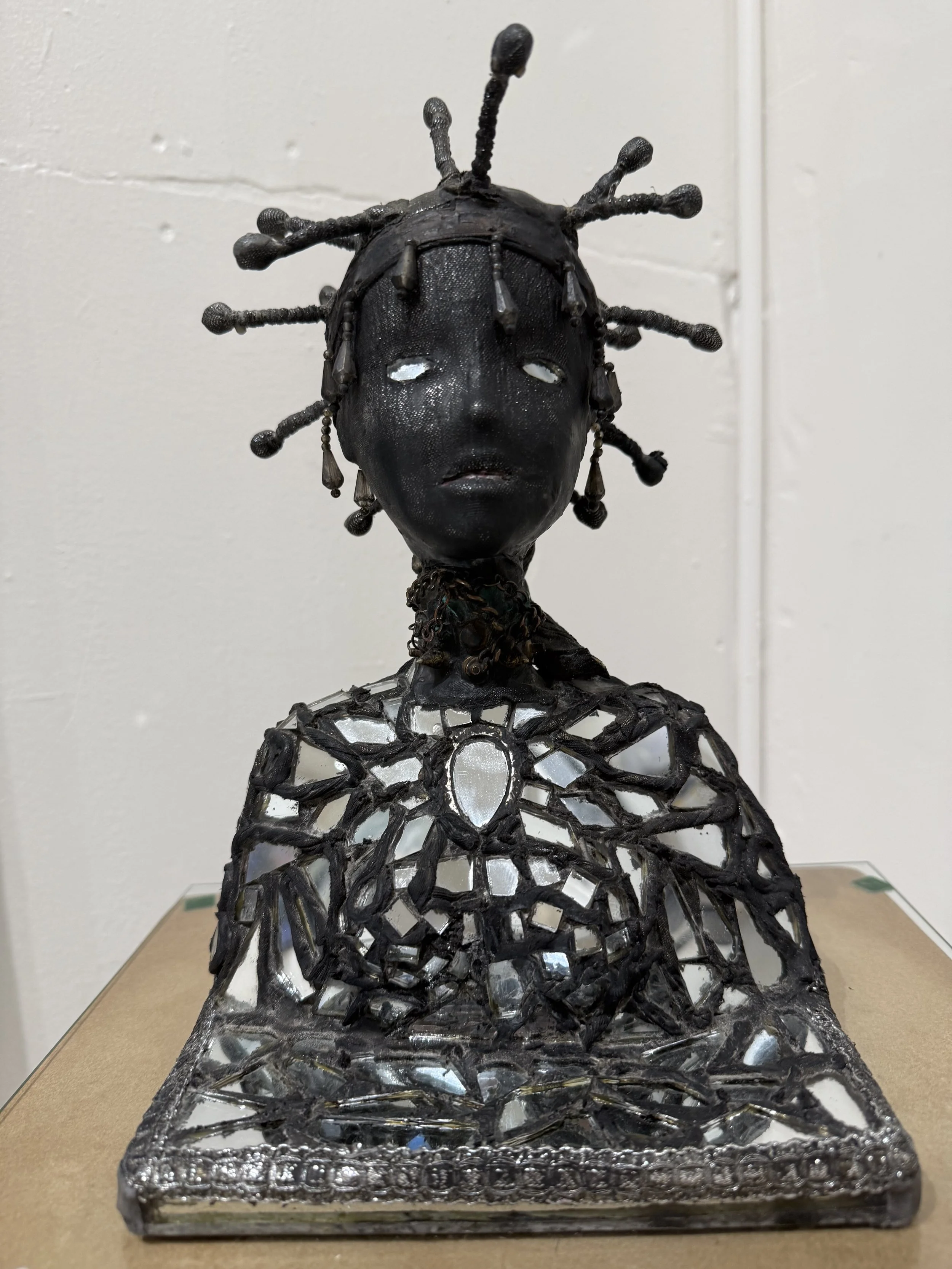
Doll by Jhonny Cineus Creation Date: 2021 Medium: Mix and Media Size: 12 x 7 1/2 in
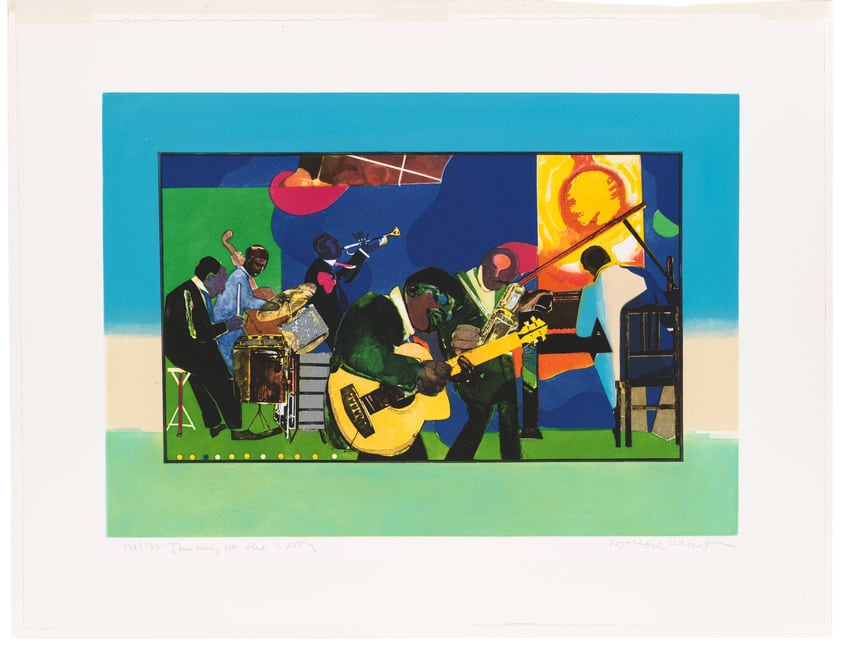
Jamming at the Savoy by Romare Beardon. Jamming at the Savoy - the classic NYC jazz venue in the 1940s, home to greats from Duke Ellington to Count Basie. While not part of the Afro-Caribbean lineage, Beardon's piece brings together the visual image of the way Afro-Caribbean culture has infused today's art and music.

Cigarette, from White Things Series by Rene Pena. Size: 16 x 20 in. Medium: photographic print B&W. Creation Date: 2001.

Artist with Paintbrush by Armando Marino Armando Marino (b. 1968). He works with oil and watercolour and is known for his strong, vibrant, and intense palette. He is the recipient of numerous awards, including the Segundo Premio, awarded by the Salón Nacional de Arte Contemporáneo Cubano. He lives and works in New York. Size (h w d): 16 x 20 in Medium: paint on paper with notation Creation Date: 1998
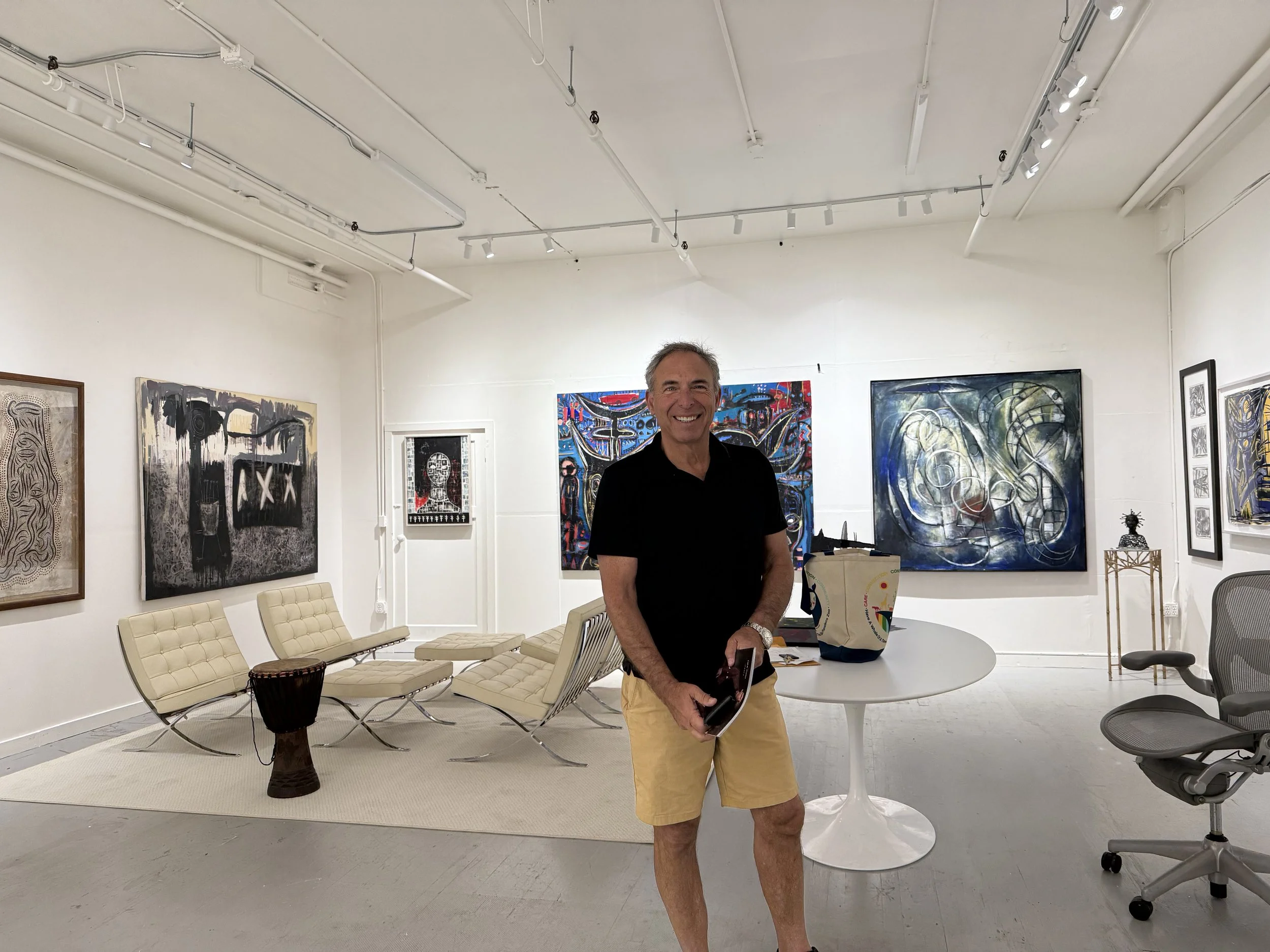
Peter Gillon, curator and collector.
Get in touch
1234 Main St . Sausalito CA, 12345

